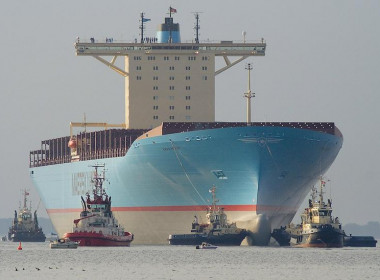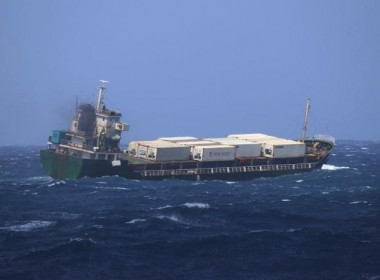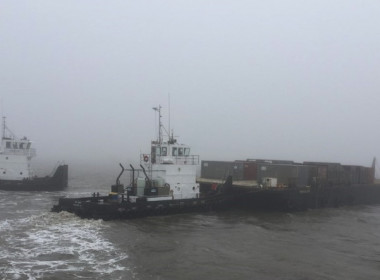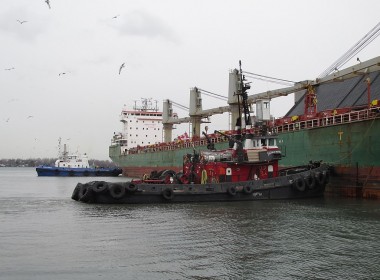COLUMN | Ropes for dopes [Tug Times]

Some time ago, members of the Nautical Institute in Hong Kong were treated to an excellent talk by Paul Walton on the topic of damage to wire ropes. Drawing upon many years experience as a marine surveyor, Paul described some of the horrible wires he had encountered during his career and included good advice on how such abominations could have been avoided. Interested readers can probably still find a copy of his presentation on the website of the Hong Kong branch of the Nautical Institute.
One attendee that evening was so impressed with the talk that she admitted Paul had taught her a great deal she had not been aware of, and suggested he should write a book. I confess this saddened me, because for all the good advice in the talk I had thought Paul was merely stating what should be obvious to most mariners. Only after thinking about it did I realise he was stating what would have been obvious to most mariners of my generation. Times have changed, and things that were important half a century ago might not be quite so important today.
A wise man (so obviously it wasn’t me) recently stated that youngsters coming into the industry today are taught what they need to know to succeed in modern shipping, and we should not be disappointed that they are not taught all the things we were expected to master. They must acquire skills that we could not have imagined when we entered the industry, and I suppose there is a good deal of truth in that.
Nonetheless, I was taught a lot about ropes and wires in that bygone age, and my knowledge was reinforced by a couple of books I was given many years ago, and still refer to although they are long out of print. Produced by British Ropes, these sturdy harback tomes were small enough to slip into the pocket of a boiler suit, and contained incredible amounts of information. One was about steel wire ropes, and the other about ropes used in the oil industry, but they both contained masses of information about the construction, strength and suitability of various types of wire, with tips about proper maintenance and illustrations of different types of damage. I carried them with me everywhere, and they were particularly useful on some salvage jobs where we were dealing with all sorts of rigging and lifting problems.
“The lists are designed to make it obvious to procurement departments that selecting the best rope is about far more than just the price.”
I had not seen anything to rival these valuable little volumes until I came across a new publication from the British Tugowners Association (BTA) containing guidance on the selection, procurement and use of tow ropes. It is so good, you wonder why nobody thought of it earlier, and I believe it will be of value to everyone in the industry for two main reasons. First because of the wide range of ropes available today, and their incredible complexity, which means very few of us have up-to-date knowledge of what is most suitable in a particular set of circumstances. And secondly because purchasing decisions are often taken by people who are not familiar with operational matters and may simply be looking to purchase the cheapest ropes they can find.
This new publication is designed to answer questions and make it clear why the towing rope is the most important piece of equipment on board harbour and escort tugs. There is a wealth of detail about the capability and characteristics of different ropes, and a series of checklists that are designed to assist operators and manufacturers to determine the best ropes for a particular tug.
Perhaps even more important is the fact that the lists are designed to make it obvious to procurement departments that selecting the best rope is about far more than just the price. Indeed, I got the impression that the lists are cunningly designed to encourage procurers to engage with a range of manufacturers and suppliers to make an informed decision.
Another important feature of the guidance is an analysis of the information provided on rope certificates. This varies widely among different manufacturers, but the authors of the guide consider all the options and propose a standard form of certificate that contains all the information practitioners need. If they can convince manufacturers to standardise their certificates in line with the proposals they will have done the industry a great service.
There is also good information about monitoring and recording the life of a rope, and an example of a rope logbook, which in my opinion should be widely adopted. Clear illustrations are included to show different kinds of wear and damage, with sensible suggestions about deciding when tow ropes should be renewed.
“The authors make the point that old ropes must never be dumped at sea, which is probably the most important thing.”
Finally, the authors propose a novel method for discovering the cost per tow of various ropes. As James Burge of Svitzer pointed out, “The cheapest rope is rarely the most affordable rope” in real-world situations. The cost-per-tow calculator is described as “experimental”, but if it makes operators think more closely about rope selection it will have done its job.
The guidance is not designed to turn us all into experts, although I suspect everyone will learn a good deal from the contents. Rather, it seeks to make all of us better informed, especially people involved in procurement. In that, it succeeds admirably.
If there is one thing in which I think the BTA could have done better, it is the topic of recycling used towing ropes. They cover it briefly, although I am sure many of their members must have good recycling schemes that could have given the rest of us plenty to think about. Perhaps more on the topic can be included when they revise the guidance. In my former company we had an agreement with a local maker of various types of net, and I suspect there are even better options available today. At least the authors make the point that old ropes must never be dumped at sea, which is probably the most important thing.
The publication is free to download from the BTA website, which is exceedingly public-spirited of them, and I would urge anyone who cares about our industry to grab a copy and study it carefully without delay.








